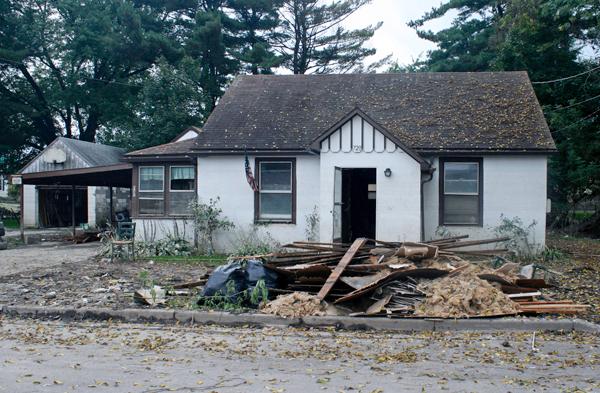
One month after record-setting floods forced about 30,000 Broome County residents to evacuate their homes, more than 5,000 remain displaced and in need of housing.
The flooding caused varying degrees of damage throughout the greater Binghamton area.
Local and state officials inspected 10,061 residential properties in Broome County after Tropical Storm Lee hit the region in September and found that 5,318 of them were damaged and 21 of them were destroyed, according to a report in the Press & Sun-Bulletin.
The city of Binghamton suffered the greatest total number of damaged properties of any municipality in Broome County, but other nearby municipalities showed higher percentages of properties affected — 90 percent of inspected properties in the Town of Union were damaged by the flooding, the Press & Sun reported.
Eric Denk, administrative assistant to county executive Patrick Brennan, said the county is currently “focus[ed] on the housing issue [and] trying to find an immediate solution.”
Some residents have been able to return to their homes already, but many of them face the chore of substantial necessary repairs, according to Denk.
“Many are in the process of replacing water heaters, boilers or both,” Denk said. “Many are cleaning up their property still, but some may never be able to reoccupy their houses.”
During initial property assessments, the city of Binghamton identified 2,133 properties that sustained flooding damage, according to Tarik Abdelazim, director of planning, housing and community development for the city. Secondary assessments conducted by local code officials revealed that some initial damage assessments were overstated and some damaged properties were missed.
Abdelazim said the city of Binghamton has been advertising to area landlords that they use the Federal Emergency Management Agency’s (FEMA) Housing Portal to list units for rent so that the city has a central inventory of rental properties. The Housing Portal is an online interface that consolidates rental listings from various federal agencies, private organizations and the public.
“The response has been fantastic, and there are more than 400 units currently listed,” Abdelazim said. “Unfortunately, the overwhelming majority are requiring a year lease, which is no help whatsoever to displaced flood victims in need of temporary housing.”
Chris McKniff, a spokesman for FEMA, said yesterday that FEMA had received more than 8,200 applications so far for temporary housing, assistance and repairs. He said FEMA has determined that $27 to $28 million will be set aside for Broome County flood recovery.
Three major housing complexes in Downtown Binghamton that serve the elderly and low-income families — Woodburn Court I, Woodburn Court II and Binghamton Housing Authority — are still waiting for repairs before an estimated 500 residents can return to them.
“Eight hundred people throughout the city don’t have safe, secure housing,” Abdelazim said.
Abdelazim said the city is working to get these facilities habitable as soon as possible, and that the county, state and FEMA are “all working closely on this.”
FEMA, however, has not yet provided trailers to Southern Tier residents forced from their homes by September’s flood, as the agency did immediately after major flooding last struck the region in 2006. Local officials have begun to call on FEMA to do so before winter begins.
Donna Lupardo (D), the assemblywoman for the 126th district, which encompasses Binghamton University, stated in an email that “the flooding of 2011 was far worse than we experienced in 2006.”
“Currently, more than 5,000 residents continue to be displaced, creating what will certainly be a housing crisis in the weeks ahead, especially as the weather turns colder,” Lupardo wrote in the email. “We are fortunate that hundreds of volunteers have come together to donate funds, organize flood relief benefits and volunteer their time to help with clean-up efforts. Under the umbrella of the United Way of Broome County, community organizations are coordinating their efforts with FEMA and numerous state agencies involved in the recovery. It will be a very long road back for the community, but we remain hopeful.”
Lupardo recommended that students or local residents who want to help visit www.uwbroome.org for more information.


